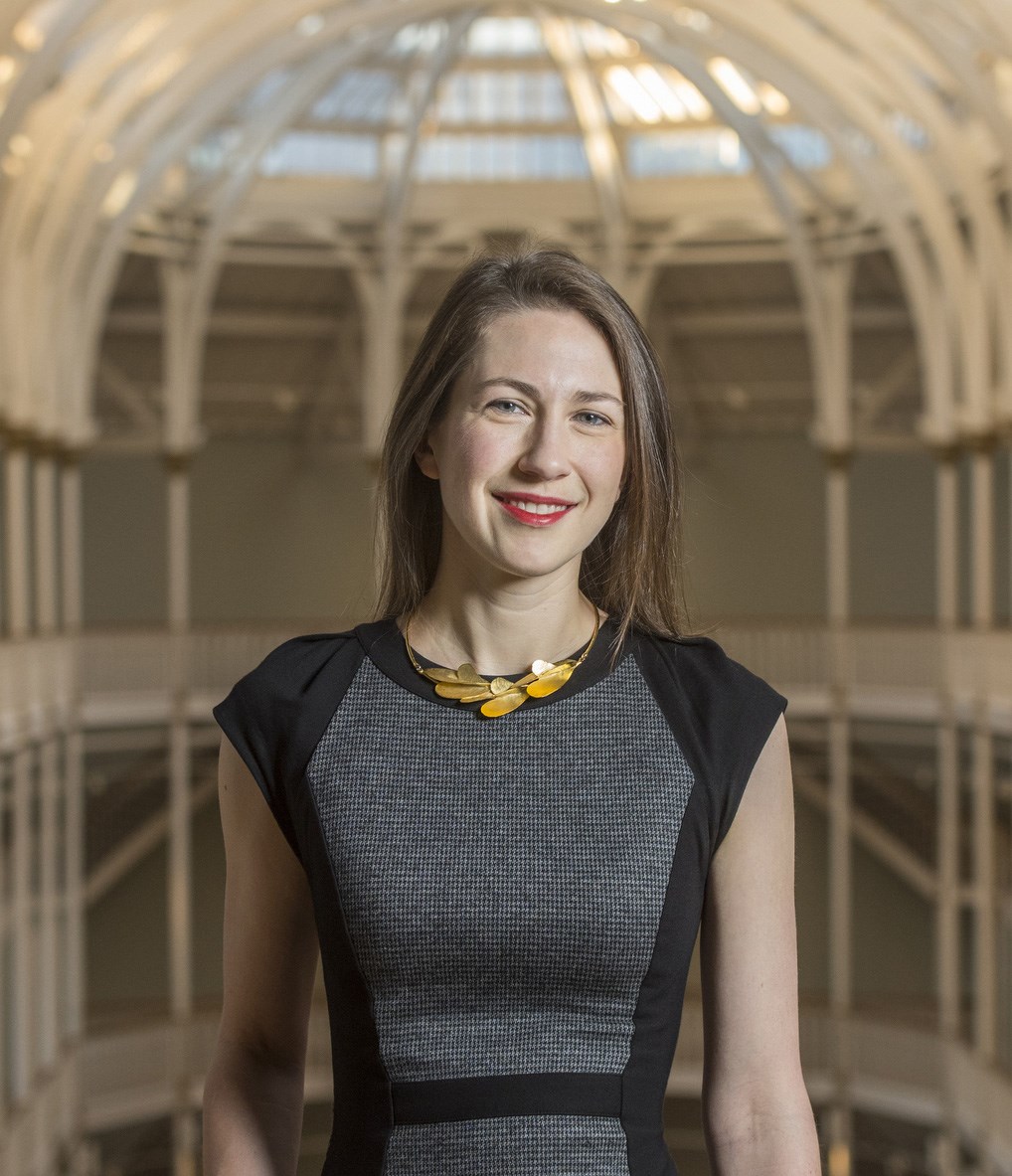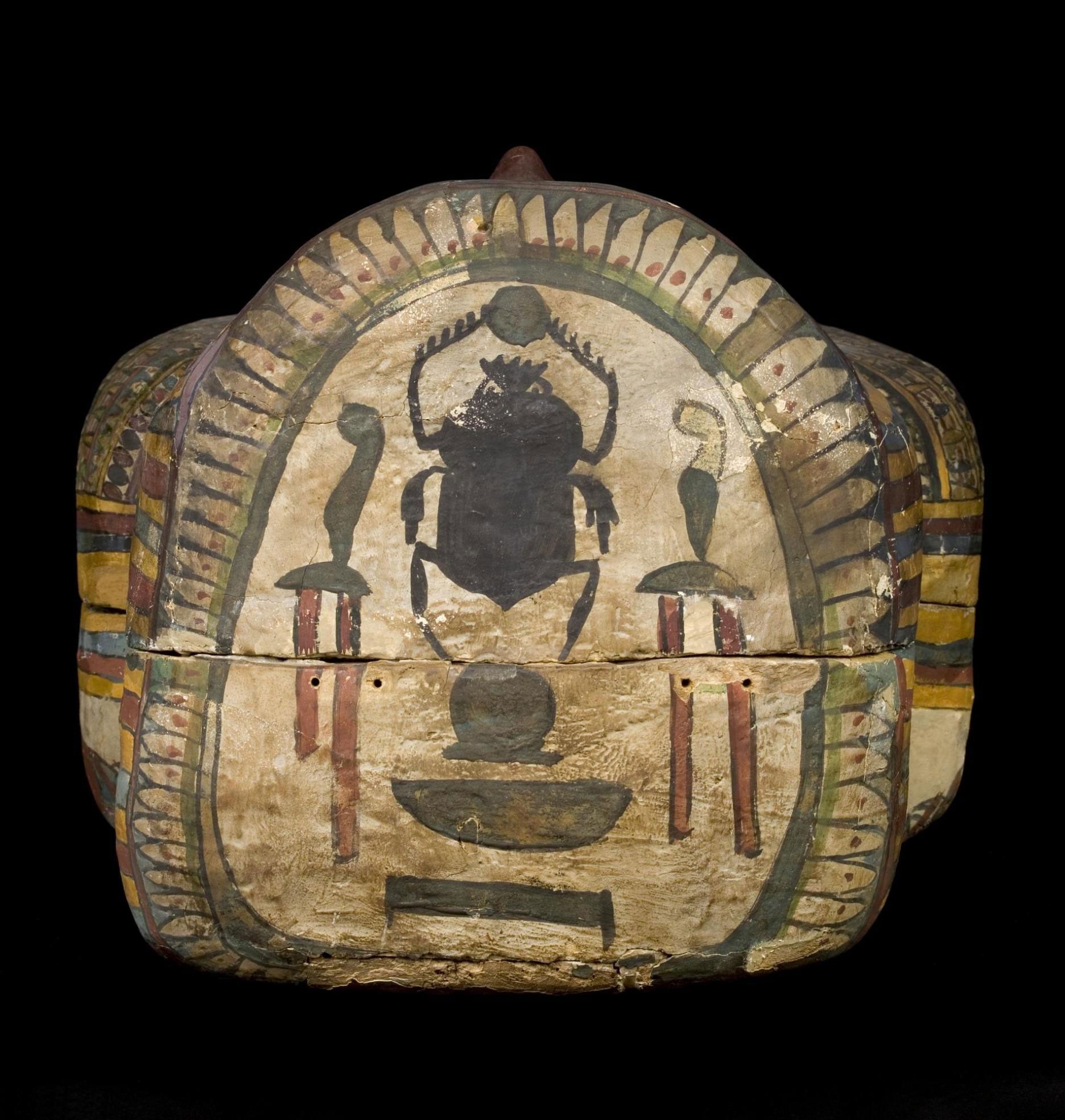Key in a search term below to search our website.
Key in a search term below to search our website.


Dr Margaret Maitland is Principal Curator of the Ancient Mediterranean, and Head of the Mediterranean, Africa, Americas, and Oceania Section.
Margaret Maitland received her Hon. B.A in Ancient Near Eastern Studies from the University of Toronto and her M.Phil. and a D.Phil. in Egyptology from the University of Oxford. Her thesis was entitled ‘Representations of social identity and hierarchy in the elite culture of Middle Kingdom Egypt’, and she continues to research and publish on issues of ancient Egyptian identity, society, and power.
She was lead curator for the Ancient Egypt Rediscovered gallery that opened at the National Museum of Scotland in February 2019. Her 2017 exhibition The Tomb: Ancient Egyptian Burial was the National Museum of Scotland’s most visited exhibition to date. It explored the story of a Theban tomb that was reused for over 1000 years, sealed intact with the burials of a Roman-era family, and rediscovered by Alexander Henry Rhind in 1857 as part of the first systematic excavation of an Egyptian tomb. In 2019, she was awarded an Art Fund Headley Fellowship for her research on the innovative Scottish archaeologist Alexander Henry Rhind as a case study for understanding excavation and collecting in 19th century Egypt and its legacies today, which she is currently preparing for publication.
She is primary supervisor for the Collaborative Doctoral Award project ‘Imagining ancient Egypt in the age of empire: Identity and power in Scottish museum displays of Egyptian objects, 1860 to 1930’ with the University of Glasgow. From 2019-2022, Maitland was a partner in the AHRC-funded UCL-led project ‘Egypt’s Dispersed Heritage’, which sought to communicate the legacies of British archaeology in Egypt, foster dialogue with modern Egyptian communities, and amplify Egyptian narratives. She is the External Member on the Griffith Institute Management Committee (the University of Oxford's Centre for Egyptology), and she leads the Scottish Egyptology Collections Network. She was a trustee of the Egypt Exploration Society from 2013-2018.
Maitland initially worked as a trainee Egyptology curator in the Department of Ancient Egypt and Sudan at the British Museum as part of their Future Curators programme, where she helped curate the UK touring exhibition Pharaoh: King of Egypt. She also worked with the Egyptian collection at the Great North Museum: Hancock in Newcastle-upon-Tyne and helped curate their exhibition Catastrophe! The Looting and Destruction of Iraq’s Past.
Maitland has carried out fieldwork in the Middle Kingdom tomb-chapels of Middle Egypt, and participated in excavations at the Ramesside town and temple site of Kom Firin in Egypt with the British Museum, the Tell Madaba Archaelogical Project in Jordan with the University of Toronto, and at Tell el-Masha’la, a late predynastic-early Dynastic settlement and cemetery in the Eastern Delta in Egypt. She has also led archaeological tours in Egypt and Sudan. Maitland is @eloquentpeasant on Twitter and writes an Egyptology blog, 'The Eloquent Peasant'; her blogging of the looting of antiquities that took place during the Egyptian Revolution was reported worldwide in 2011.
In 2012, she was appointed Curator of the Ancient Mediterranean at National Museums Scotland, and Senior Curator in 2016, where she curates the Ancient Mediterranean collections, including archaeology from ancient Egypt, Sudan, Cyprus, Greece, Rome, and western Asia with an emphasis on the ancient Egyptian collections. From 2012-2014, with Lore Troalen, she was part of the Museum’s collaborative CNRS-funded research project PICS 5995, entitled the ‘Analytical study of Bronze Age Egyptian gold jewellery’. With Dan Potter, she also helped curate the 2019 National Museums Scotland touring exhibition Discovering Ancient Egypt, which explored Scottish contributions to Egyptology.
Maitland, M. (forthcoming), ‘Social control in Middle Kingdom Egypt: Embodied experience and symbolic violence’, in Loktionov, A. (ed.), Compulsion and Control in Ancient Egypt: Proceedings of the Third Lady Wallis Budge Egyptology Symposium (Access Archaeology series, Oxford: Archaeopress).
Maitland, M. (2022), ‘The King and I: Commemorating the privilege of royal statue dedication in Ramesside Deir el-Medina’, Töpfer, S. et. al. (eds.), Deir El-Medina, Through the Kaleidoscope: Proceedings of the International Workshop Turin 8th-10thOctober 2018 (Turin: Museo Egizio), 158-180.
Maitland, M., Ross, J., and Troalen, L.G. (2022), ‘Dye and pigment analysis of a re-discovered early Roman-era mummy shroud from the Rhind Tomb at Thebes’ in Quiles, A. and B. Gehad (eds.), Proceedings of the first international conference for Science of Ancient Egyptian materials and technology (SAEMT) (Cairo: IFAO), 123–132.
Maitland, M., Potter, D.M. and Troalen, L. (2022), ‘The burial of the “Qurna Queen”’ in Miniaci, G. and Lacovara, Peter (eds.), The Treasure of the Egyptian Queen Ahhotep and International Relations at the Turn of the Middle Bronze Age (1550 B.C.) (London: Golden House Publications), 205–233.
Maitland, M. (2021), ‘Fishing and fowling for pleasure versus produce: Ancient Egyptian representations of social status in relation to animals and the natural environment’ in Geisen, C. et. al. (eds.), His Good Name. Essays on Identity and Self-Presentation in Ancient Egypt in Honor of Ronald J. Leprohon (MVCAE 5; Atlanta: Lockwood Press), 267–282.
Stable, C., Maitland, M., de Bellaigue, D., Potter, D.M., Bryan, B., and Murray, M. (2021) ‘Rediscovering Ancient Egypt: Consideration of the Legacy, Ethics, and Aesthetics of Previously Restored Egyptian Artefacts’, Journal of the Institute of Conservation 44:2, 134-152.
Maitland, M. (2018), ‘Dirt, purity, and spatial control: anthropological perspectives on Ancient Egyptian Society and Culture in the Middle Kingdom’, Journal of Ancient Egyptian Interconnections 17, 47-72.
Maitland, M. (2017), The Tomb: Ancient Egyptian Burial (Edinburgh: NMS Enterprises Ltd).
Maitland, M. (2017), ‘One Theban Tomb, 1000 Years of Burial’, Egyptian Archaeology 50, 44-46.
Maitland, M. (2017), ‘Chauchitza at National Museums Scotland’ in Shapland, A (ed.), Archaeology behind the battle lines: Macedonia 1915–1919 (Cambridge and Athens: British School in Athens and Cambridge University Press).
Troalen, L.G., Tissot, I., Maitland, M., Guerra, M.F. (2016), ‘Jewellery of an Egyptian young girl: Middle Kingdom goldwork from Harageh tomb 72’, Historical Metallurgy 47 (1).
Irving, R. and Maitland, M. (2015), ‘An innovative antiquarian: Alexander Henry Rhind’s excavations in Egypt and his collection in National Museums Scotland’ in Cooke, N, and Daubney, V (eds.), Every traveller needs a compass: Travel and collecting in Egypt and the Near East (Oxbow, Oxford), 85–100.
Maitland, M. (2015), ‘Hieroglyphs from the North: Newcastle's early travellers in Egypt and their correspondence with Jean-Francois Champollion’ in Cooke, N., and Daubney, V. (eds.), Every traveller needs a compass: Travel and collecting in Egypt and the Near East (Oxbow, Oxford), 113–130.
Clarysse, W., Maitland, M. and Worp, K. (2014), ‘Mummy labels from Graeco-Roman Egypt in National Museums Scotland, Edinburgh’, Chronique d’Égypte 89 (178), 356–375.
Maitland, M. (2012), Pharaoh: King of Egypt (London: British Museum Press).
For further publications see the National Museums Scotland Research Repository.

Explore Ancient Egypt with our Curator of the Ancient Mediterranean Margaret Maitland.
Read more